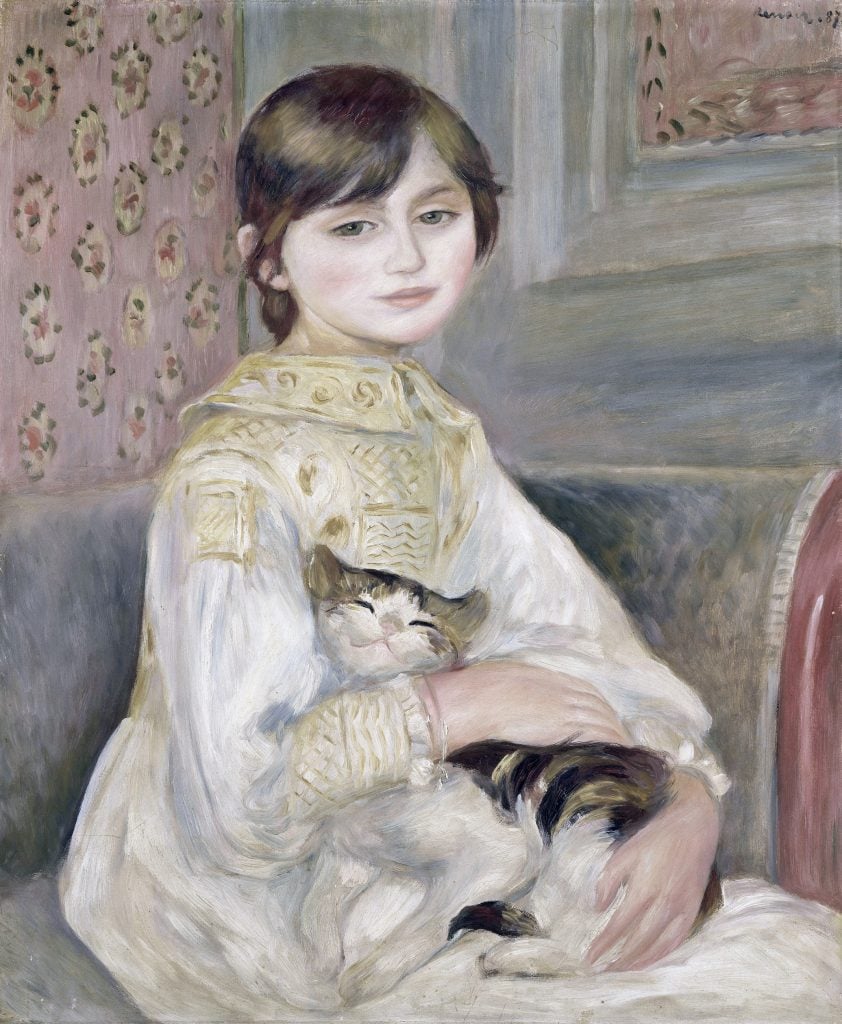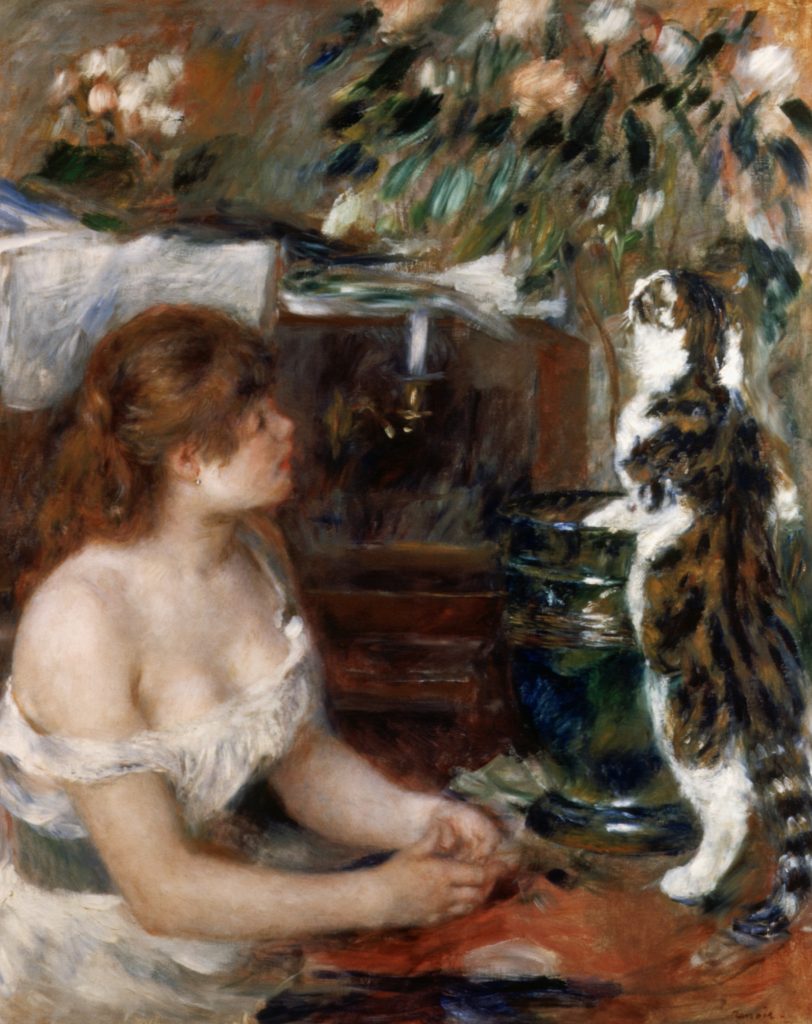Art World
Art Bites: How Renoir’s Love of Cats Is Enshrined in His Paintings
In his later years, the artist would paint with a cat in his lap.

We may know about the artist Louis Wain and the fondness for cats that dominated his work, but it so happens that another feline fan was already including cats in his canvases when Wain was still a teenager. Pierre-Auguste Renoir loved the animals so much that cat hair trapped in his paint has been used to authenticate his work.
One work which helped to catapult the Impressionist artist to national fame was Mme Charpentier and her Children (1878), in which an almost invisible cat sits on the lap of the matriarch, a French salonist married to the wealthy arts patron Georges Charpentier. Other significant works by Renoir with with feline figures include Woman with a Cat (ca. 1875) and his 1887 portrait of Julie Manet, the daughter of the artists Berthe Morisot and Édouard Manet’s brother Eugéne Manet. Cats became symbols of feminine sensuality and motherhood in his works, with the artist once saying “cats are the only women it is worth talking about.” Yeesh.
The domestication of cats may have occurred as long as 12,000 years ago in the Near East’s Fertile Crescent. Cats were venerated in various ancient civilizations, and experienced burials to match their status. In the West, the animal’s popularity in the home waned during the Middle Ages, when cats became affiliated with witches and dark magic, and their reputation didn’t recover until the 18th century. In the 19th century, people of all classes began to keep cats as beloved pets living indoors and seen as members of family rather than just convenient mouse-catching animals living in the vicinity of the home.

Pierre-Auguste Renoir, Girl with a Cat (1882). Photo: Francis G. Mayer/Corbis/VCG via Getty Images.
Renoir kept several cats at his home in Cagnes-sur-Mer with his wife, the dressmaker Aline Victorine Charigot, and their three sons. The family moved to the Mediterranean coast in the hope that the warmer climate would help with the artist’s rheumatoid arthritis. Renoir’s health deteriorated and the he would apparently ease his pain and keep himself warm by keeping a cat on his lap in his wheelchair while he painted.
As discussed in the paper “How Renoir coped with rheumatoid arthritis” (published in medical journal BMJ in 1997), it was presumably these lap cats’ hair that ended up mixed in to the artist’s paints, which helped the Institut Parsteur in Paris to authenticate and date some of his later work.
Towards the end of his life, Renoir required an assistant to place his paintbrushes in his hand, due to the severity of his arthritis. It’s possible that the love and warmth the artist received from his feline companions kept the modern master painting for longer than he otherwise might have.
What’s the deal with Leonardo’s harpsichord-viola? Why were Impressionists obsessed with the color purple? Art Bites brings you a surprising fact, lesser-known anecdote, or curious event from art history. These delightful nuggets shed light on the lives of famed artists and decode their practices, while adding new layers of intrigue to celebrated masterpieces.





